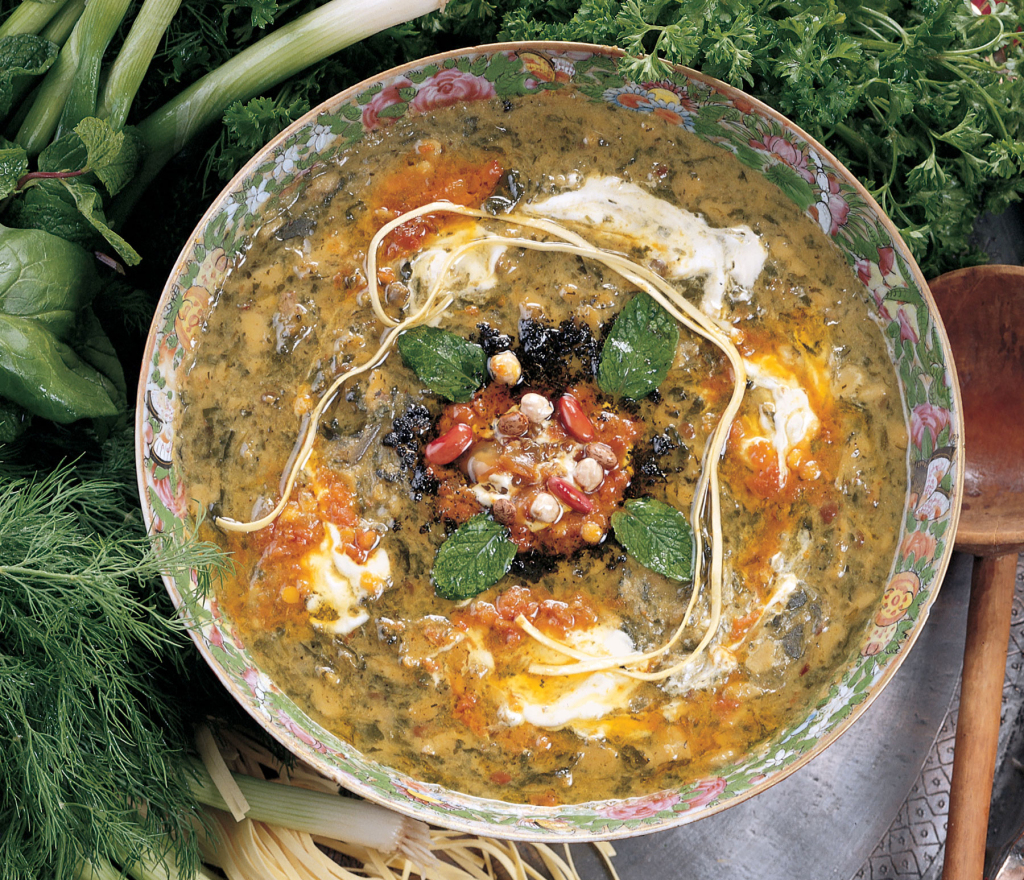March 10, 2015
Modern Iranian Recipes Honor Persian Tradition

Pomegranate-Infused Leg of Lamb
Nearly four millennia ago, Persian recipes were recorded in cuneiform script on clay tablets. The notes etched in stone have been at the heart of Iranian culinary tradition for years –in everything from daily snacks to winter solstice celebration meals and Persian New Year dishes.

Sumac Grilled Fish (left) and Fresh Herb Kuku (right). Courtesy of Mage Publishers.
Persian food is traditionally categorized as either “hot” (garmi) or “cold” (sardi). “Hot” or garmi foods are rich, highly processed, oily, calorie-heavy or very sweet or spicy. They thicken blood and speed metabolism. “Cold” or sardi foods are the opposite –fresh and light. They dilute blood, and slow metabolism. Dates and grapes, for example, are considered “hot” and plums, peaches and oranges are “cold.”
In “Food of Life: Ancient Persian and Modern Iranian Cooking and Ceremonies,” famed “Persian cuisine guru” Najmieh Batmanglij expands on this idea as both a cook and a mother:
“It takes a certain skill to correctly select food for the family, since people too can have ‘hot’ and ‘cold’ natures. An extremely out-of-balance diet can lead to illness. For example, those with ‘hot’ natures must eat ‘cold’ foods to achieve balance. My older son, like many children, sometimes eats too many dates or chocolate. Because he has a ‘hot’ nature -something I learned very early in his life- too much of this hot food does not agree with him at all. Drinking watermelon or grapefruit juice, or the nectar from other ‘cold fruits, quickly helps restore his balance -and his smile.”
If the practice is unfamiliar, the concept of a balanced diet certainly is not. Batmanglij joined The Kojo Nnamdi Show Wednesday, March 11 to share her favorite traditions ahead of Nowruz, or Persian New Year. One staple at every Nowruz table is a delicious noodle and chickpea soup, which symbolizes good fortune and fruitful endeavors in the new year.
Check out the recipe below!



